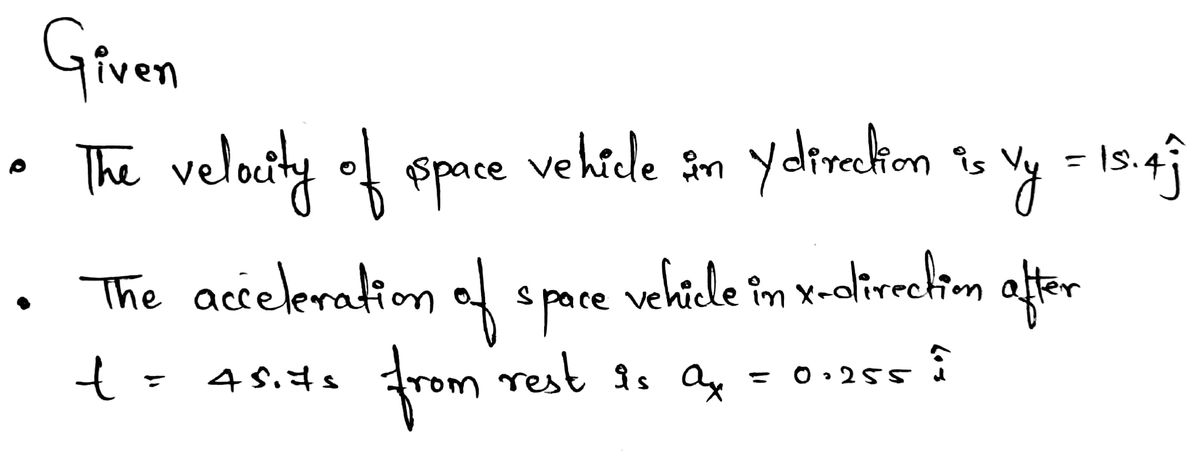Your answer is partially correct. A space vehicle is coasting at a constant velocity of 15.4 m/s in the +y direction relative to a space station. The pilot of the vehicle fires a RCS (reaction control system) thruster, which causes it to accelerate at 0.255 m/s2 in the +x direction. After 45.7 s, the pilot shuts off the RCS thruster. After the RCS thruster is turned off, find (a) the magnitude and (b) the direction of the vehicle's velocity relative to the space station. Express the direction as an angle (in degrees) measured from the +y direction. (a) Number 19.31 (b) Number 37 eTextbook and Media Hint Units m/s Units 0 Attempts: 3 of 3 used
Displacement, Velocity and Acceleration
In classical mechanics, kinematics deals with the motion of a particle. It deals only with the position, velocity, acceleration, and displacement of a particle. It has no concern about the source of motion.
Linear Displacement
The term "displacement" refers to when something shifts away from its original "location," and "linear" refers to a straight line. As a result, “Linear Displacement” can be described as the movement of an object in a straight line along a single axis, for example, from side to side or up and down. Non-contact sensors such as LVDTs and other linear location sensors can calculate linear displacement. Non-contact sensors such as LVDTs and other linear location sensors can calculate linear displacement. Linear displacement is usually measured in millimeters or inches and may be positive or negative.


Step by step
Solved in 2 steps with 2 images









